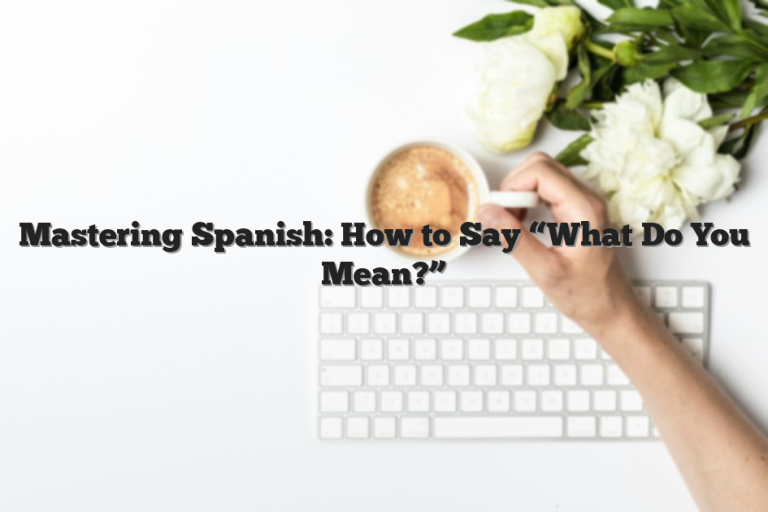Descriptive Adjectives: Enhancing Your Activity Descriptions
Adjectives are powerful tools that breathe life into our language. They allow us to move beyond simple nouns and verbs, painting vivid pictures with our words. When describing activities, adjectives become especially important. They help us convey not just what is happening, but also how it’s happening, creating a richer and more engaging experience for the listener or reader. This article delves into the world of adjectives for activities, exploring their types, usage, and how to effectively incorporate them into your writing and speech. Whether you’re an English language learner or a seasoned writer, understanding this topic will significantly enhance your descriptive abilities.
Table of Contents
- Introduction
- Definition of Adjectives for Activities
- Structural Breakdown
- Types and Categories of Adjectives for Activities
- Examples of Adjectives for Activities
- Usage Rules for Adjectives
- Common Mistakes
- Practice Exercises
- Advanced Topics
- FAQ
- Conclusion
Definition of Adjectives for Activities
Adjectives for activities are descriptive words that modify verbs or verb phrases, adding detail about how an action is performed or experienced. Unlike adjectives that modify nouns, these adjectives often function adverbially, describing the characteristics of the activity itself.
They provide essential context, enhancing the reader’s or listener’s understanding of the action being described. Consider the difference between “He ran” and “He ran quickly.” The adjective “quickly” transforms the simple action into a more vivid and informative one.
These adjectives can describe various aspects of an activity, including the manner in which it’s performed, the intensity of the action, the emotions involved, the duration of the activity, its difficulty, or its purpose. This multifaceted nature makes them incredibly versatile and crucial for effective communication.
Understanding how to use them correctly can significantly improve the clarity and expressiveness of your language.
Structural Breakdown
The placement of adjectives for activities can vary depending on the specific construction of the sentence. In many cases, they function similarly to adverbs, modifying the verb or verb phrase.
They often appear after the verb or object of the verb. However, some adjectives can also be used attributively, directly before the noun that represents the activity itself (e.g., “a joyful run”).
The basic structure typically involves a subject, a verb representing the activity, and an adjective (or adverb) that modifies the verb. For example:
- Subject + Verb + Adjective/Adverb (e.g., She danced gracefully.)
- Subject + Verb + Object + Adjective/Adverb (e.g., He completed the task diligently.)
It’s important to note that while many adjectives can function as adverbs by adding “-ly,” this isn’t always the case. Some adjectives inherently describe the manner of an action without requiring any modification (e.g., “a fast car,” “he drove fast”).
The key is to choose the adjective that best conveys the intended meaning and fits grammatically within the sentence.
Types and Categories of Adjectives for Activities
Adjectives that describe activities can be categorized based on the specific aspect of the activity they modify. Understanding these categories can help you choose the most appropriate adjective to convey your intended meaning.
Adjectives Describing Emotion
These adjectives describe the feelings associated with the activity. They add an emotional layer, indicating whether the activity is joyful, sad, anxious, etc.
Adjectives Describing Intensity
These adjectives indicate the degree or strength of the activity. They can range from mild to extreme, conveying how powerfully the action is performed or felt.
Adjectives Describing Manner
These adjectives describe how the activity is performed. They focus on the style, technique, or method used in carrying out the action.
Adjectives Describing Duration
These adjectives specify the length of time the activity lasts. They provide information about whether the activity is brief, prolonged, or intermittent.
Adjectives Describing Difficulty
These adjectives indicate how challenging or easy the activity is. They convey the level of effort required to complete the action.
Adjectives Describing Purpose
These adjectives describe the intention or reason behind the activity. They explain why the action is being performed.
Examples of Adjectives for Activities
The following tables provide extensive examples of adjectives used to describe activities, categorized by the types discussed above. These examples will help you understand how to use these adjectives in various contexts.
Examples Describing Emotion
This table showcases adjectives that describe the emotional aspect of activities. These adjectives can help convey the feelings associated with engaging in a particular action.
| Adjective | Example Sentence |
|---|---|
| Joyful | The children played a joyful game of tag in the park. |
| Excited | She anticipated her upcoming trip with excited anticipation. |
| Anxious | He approached the job interview with anxious apprehension. |
| Peaceful | They enjoyed a peaceful walk along the serene beach. |
| Enthusiastic | The team embraced the new project with enthusiastic energy. |
| Passionate | The artist painted with passionate strokes, pouring their soul onto the canvas. |
| Content | She spent a content afternoon reading in her cozy armchair. |
| Hopeful | They started the new business with hopeful optimism. |
| Relaxed | He spent a relaxed evening listening to calming music. |
| Grateful | She accepted the award with grateful appreciation. |
| Eager | The students were eager to learn about the new topic. |
| Delighted | She was delighted to receive such a thoughtful gift. |
| Thrilled | They were thrilled to win the championship game. |
| Elated | He felt elated after receiving the good news. |
| Cheerful | She greeted everyone with a cheerful smile. |
| Optimistic | Despite the challenges, they remained optimistic about the future. |
| Pleased | The teacher was pleased with the students’ progress. |
| Satisfied | He felt satisfied after completing the difficult task. |
| Serene | She found a serene sense of peace in nature. |
| Tranquil | The garden provided a tranquil escape from the city. |
| Blissful | They spent a blissful honeymoon on a tropical island. |
| Radiant | She looked radiant with happiness on her wedding day. |
| Jubilant | The crowd was jubilant after the victory. |
Examples Describing Intensity
This table provides examples of adjectives that describe the intensity of activities. These adjectives help to express the degree or strength of an action.
| Adjective | Example Sentence |
|---|---|
| Intense | The runners engaged in an intense competition to reach the finish line. |
| Vigorous | He performed a vigorous workout at the gym. |
| Energetic | The children ran around with energetic enthusiasm. |
| Forceful | She delivered a forceful speech that captivated the audience. |
| Powerful | The boxer landed a powerful punch that knocked his opponent down. |
| Fierce | The storm raged with fierce intensity. |
| Keen | He had a keen interest in learning new languages. |
| Strong | She felt a strong desire to help those in need. |
| Deep | They shared a deep connection that transcended words. |
| Passionate | He spoke with passionate conviction about his beliefs. |
| Extreme | They participated in extreme sports, pushing their limits. |
| Great | She had a great passion for music. |
| High | The demand for the product was high. |
| Severe | The damage from the earthquake was severe. |
| Acute | He felt an acute sense of loss. |
| Profound | The experience had a profound impact on her life. |
| Radical | They proposed a radical solution to the problem. |
| Substantial | There was a substantial increase in sales. |
| Tremendous | They made a tremendous effort to complete the project. |
| Utmost | He showed utmost respect for his elders. |
| Ardent | She expressed her ardent support for the cause. |
| Burning | He had a burning desire to succeed. |
| Driving | She had a driving ambition to achieve her goals. |
Examples Describing Manner
This table illustrates adjectives that describe the manner in which activities are performed. These adjectives focus on the style, technique, or method used.
| Adjective | Example Sentence |
|---|---|
| Graceful | The ballerina moved across the stage with graceful elegance. |
| Skillful | The chef prepared a delicious meal with skillful precision. |
| Careful | He approached the delicate task with careful attention. |
| Efficient | The team completed the project in an efficient manner. |
| Methodical | She approached the research project with a methodical approach. |
| Precise | The surgeon performed the operation with precise movements. |
| Deliberate | He made a deliberate decision after careful consideration. |
| Strategic | The company adopted a strategic plan to increase market share. |
| Tactical | The general employed a tactical maneuver to outsmart the enemy. |
| Artful | She crafted a artful piece of pottery. |
| Elegant | The dancers performed an elegant routine. |
| Smooth | He executed the move in a smooth manner. |
| Fluid | The water flowed in a fluid motion. |
| Natural | She sang with a natural talent. |
| Easy | He handled the situation with easy confidence. |
| Clever | They devised a clever solution to the problem. |
| Inventive | The artist created an inventive sculpture. |
| Resourceful | She was resourceful in finding solutions to complex problems. |
| Innovative | The company developed an innovative product. |
| Creative | He approached the project with a creative mindset. |
| Calculated | His moves were calculated and precise. |
| Measured | She spoke in a measured tone. |
| Purposeful | His actions were purposeful and directed. |
Examples Describing Duration
This table provides examples of adjectives that describe the duration of activities. These adjectives specify the length of time the activity lasts.
| Adjective | Example Sentence |
|---|---|
| Brief | They shared a brief conversation before parting ways. |
| Prolonged | The negotiations resulted in a prolonged stalemate. |
| Short | He took a short break from work to recharge. |
| Extended | They enjoyed an extended vacation in Europe. |
| Lengthy | The trial concluded after a lengthy process. |
| Fleeting | He caught a fleeting glimpse of her in the crowd. |
| Momentary | There was a momentary pause in the conversation. |
| Lasting | They formed a lasting friendship that endured for years. |
| Continuous | The rain fell in a continuous downpour. |
| Constant | The noise was a constant distraction. |
| Periodic | They received periodic updates on the project’s progress. |
| Intermittent | The signal was intermittent, making it difficult to connect. |
| Temporary | He found a temporary solution to the problem. |
| Permanent | She established a permanent residence in the city. |
| Transient | The feeling was transient and quickly faded away. |
| Eternal | They vowed to have eternal love for each other. |
| Enduring | Their bond was enduring and unbreakable. |
| Ongoing | The investigation is ongoing and still in progress. |
| Sustained | The company experienced a sustained period of growth. |
| Unending | The task seemed to stretch on in an unending fashion. |
| Annual | They held an annual meeting to discuss the company’s performance. |
| Daily | He took a daily walk to stay healthy. |
| Weekly | They had a weekly team meeting. |
Examples Describing Difficulty
This table presents adjectives that describe the difficulty of activities. These adjectives indicate how challenging or easy the activity is.
| Adjective | Example Sentence |
|---|---|
| Difficult | He faced a difficult challenge in solving the complex equation. |
| Easy | She found it easy to learn the new language. |
| Challenging | The project proved to be a challenging undertaking. |
| Simple | The instructions were simple and straightforward. |
| Complex | The problem required a complex solution. |
| Hard | It was a hard task to complete. |
| Tough | They had a tough time finishing the race. |
| Demanding | The job was demanding and required long hours. |
| Strenuous | He engaged in a strenuous workout at the gym. |
| Arduous | The journey was arduous and filled with obstacles. |
| Effortless | She made the task look effortless. |
| Painless | The procedure was painless and quick. |
| Manageable | The workload was manageable with proper organization. |
| Feasible | The plan was feasible and likely to succeed. |
| Achievable | The goals were achievable with hard work. |
| Formidable | They faced a formidable opponent in the competition. |
| Daunting | The task seemed daunting at first. |
| Troublesome | The issue was troublesome to resolve. |
| Burdensome | The responsibility felt burdensome. |
| Onerous | The task was onerous and time-consuming. |
| Elementary | The concept was elementary and easy to understand. |
| Basic | He had a basic understanding of the subject. |
| Straightforward | The instructions were straightforward and clear. |
Examples Describing Purpose
This table provides examples of adjectives that describe the purpose of activities. These adjectives explain why the action is being performed.
| Adjective | Example Sentence |
|---|---|
| Educational | The museum offered an educational tour for the students. |
| Recreational | They participated in recreational activities during their vacation. |
| Therapeutic | Gardening can be a therapeutic activity for relieving stress. |
| Preventative | Regular exercise is essential for preventative healthcare. |
| Exploratory | The team embarked on an exploratory mission to discover new lands. |
| Investigative | The police launched an investigative inquiry into the crime. |
| Curative | The medicine had a curative effect on the illness. |
| Restorative | Sleep is crucial for restorative bodily functions. |
| Preparatory | He participated in preparatory exercises before the competition. |
| Protective | The helmet provided protective gear for the cyclist. |
| Commercial | The company launched a commercial campaign to boost sales. |
| Political | He engaged in political activism to promote change. |
| Social | They organized a social event to bring people together. |
| Cultural | The festival celebrated diverse cultural traditions. |
| Economic | The government implemented economic reforms to stimulate growth. |
| Scientific | The researchers conducted a scientific experiment. |
| Artistic | She pursued her artistic passions through painting. |
| Religious | They participated in religious ceremonies. |
| Humanitarian | The organization provided humanitarian aid to the refugees. |
| Charitable | They organized a charitable fundraiser. |
| Instructional | The course provided instructional videos. |
| Developmental | The program focused on developmental skills. |
| Promotional | They launched a promotional campaign. |
Usage Rules for Adjectives
Using adjectives correctly involves adhering to specific grammatical rules. Here are some key rules to remember:
- Placement: Adjectives typically come before the noun they modify. However, when describing activities, they often function as adverbs and are placed after the verb.
- Adjective vs. Adverb: Many adjectives can be turned into adverbs by adding “-ly” (e.g., quick becomes quickly). However, some adjectives already function as adverbs without modification (e.g., fast).
- Multiple Adjectives: When using multiple adjectives, follow a logical order (e.g., opinion, size, age, shape, color, origin, material, purpose). However, for activities, it’s often best to keep it simple and use only one or two well-chosen adjectives.
- Comparative and Superlative Forms: Use comparative forms (-er, more) to compare two activities and superlative forms (-est, most) to compare three or more.
- Avoiding Redundancy: Choose adjectives that add meaningful information and avoid using adjectives that simply repeat what the verb already implies.
It is always a good idea to consult a dictionary or grammar guide if you are unsure about the correct usage of a particular adjective.
Common Mistakes
Here are some common mistakes to avoid when using adjectives for activities:
| Incorrect | Correct | Explanation |
|---|---|---|
| He ran quick. | He ran quickly. / He ran fast. | “Quick” is an adjective; “quickly” is the adverbial form. “Fast” can function as both. |
| She danced graceful. | She danced gracefully. | “Graceful” is an adjective; “gracefully” is the adverbial form. |
| They played joyfuly. | They played joyfully. / They played a joyful game. | The correct adverbial form of “joyful” is “joyfully.” Alternatively, use “joyful” to describe “game”. |
| He completed the task diligent. | He completed the task diligently. | “Diligent” is an adjective; “diligently” is the adverbial form. |
| She sang good. | She sang well. | “Good” is an adjective; “well” is the adverbial form when modifying a verb. |
Understanding these common errors and their corrections is crucial for improving your grammar and avoiding miscommunication.
Practice Exercises
Test your understanding of adjectives for activities with these exercises.
Exercise 1: Choose the correct adjective or adverb to complete each sentence.
| Question | Answer |
|---|---|
| 1. She sang the song (beautiful / beautifully). | Beautifully |
| 2. He ran (fast / fastly) to catch the bus. | Fast |
| 3. They worked (hard / hardly) to finish the project. | Hard |
| 4. She spoke (clear / clearly) so everyone could understand. | Clearly |
| 5. He painted the picture (careful / carefully). | Carefully |
| 6. The team played a (strategic / strategically) game. | Strategic |
| 7. She approached the task (methodical / methodically). | Methodically |
| 8. He trained (vigorous / vigorously) for the marathon. | Vigorously |
| 9. They celebrated (jubilant / jubilantly) after the victory. | Jubilantly |
| 10. She completed the puzzle with (easy / easily). | Ease |
Exercise 2: Rewrite the following sentences using a more descriptive adjective for the activity.
| Question | Answer |
|---|---|
| 1. He walked down the street. | He strolled leisurely down the street. |
| 2. She ate her lunch. | She devoured her lunch hungrily. |
| 3. They played the game. | They played the game enthusiastically. |
| 4. He completed the assignment. | He completed the assignment diligently. |
| 5. She watched the movie. | She watched the movie intently. |
| 6. He sang the song. | He sang the song passionately. |
| 7. They ran the race. | They ran the race fiercely. |
| 8. She wrote the letter. | She wrote the letter carefully. |
| 9. He solved the problem. | He solved the problem cleverly. |
| 10. They planned the trip. | They planned the trip meticulously. |
Exercise 3: Identify the type of adjective (Emotion, Intensity, Manner, Duration, Difficulty, Purpose) used in each sentence.
| Question | Answer |
|---|---|
| 1. She danced gracefully across the stage. | Manner |
| 2. He felt a deep satisfaction after completing the project. | Emotion |
| 3. They engaged in an intense competition. | Intensity |
| 4. The negotiations resulted in a prolonged stalemate. | Duration |
| 5. He faced a difficult challenge. | Difficulty |
| 6. The museum offered an educational tour. | Purpose |
| 7. She anticipated her upcoming trip with excited anticipation. | Emotion |
| 8. He performed a vigorous workout at the gym. | Intensity |
| 9. She approached the research project with a methodical approach. | Manner |
| 10. He took a brief break from work. | Duration |
Advanced Topics
For advanced learners, consider exploring these more complex aspects of adjectives for activities:
- Figurative Language: How adjectives can be used metaphorically or symbolically to describe activities.
- Subjective vs. Objective Adjectives: The difference between adjectives that express personal opinions and those that describe factual characteristics.
- The Impact of Adjective Choice: How different adjectives can subtly alter the meaning and tone of a sentence.
- Using adjective clauses to add detail: Employing clauses to add more information about the activities being done.
- Combining adjectives for impact: Using multiple adjectives to create a more vivid and specific image of the activity.
Exploring these topics can further refine your understanding and use of adjectives for activities, allowing you to communicate with greater nuance and precision.
FAQ
Here are some frequently asked questions about adjectives for activities:
- What is the difference between an adjective and an adverb?
Adjectives modify nouns, while adverbs modify verbs, adjectives, or other adverbs. Adjectives describe qualities or characteristics of nouns, while adverbs describe how, when, where, or to what extent an action is performed.
- How do I know whether to use an adjective or an adverb after a verb?
If you are describing the subject of the verb, use an adjective. If you are describing the action of the verb, use an adverb. For example, “He is quick” (describing the subject) vs. “He runs quickly” (describing the action).
- Can I use multiple adjectives to describe an activity?
Yes, you can, but it’s best to use them sparingly. Choose adjectives that add meaningful information and avoid redundancy. Pay attention to the order of adjectives to ensure clarity.
- Are there any adjectives that can function as both adjectives and adverbs?
Yes, some adjectives, like “fast,” can function as both adjectives and adverbs. “He is a fast runner” (adjective) vs. “He runs fast” (adverb).
- How can I improve my vocabulary of adjectives for activities?
Read widely and pay attention to the adjectives that authors use to describe actions. Use a thesaurus to find synonyms for common adjectives and expand your range of descriptive words. Practice using new adjectives in your writing and speech.
- What is the best way to learn the correct placement of adjectives in a sentence?
The best way to learn the correct placement is through practice and exposure to the English language. Pay attention to how native speakers construct sentences and try to mimic their patterns. You can also consult grammar guides and online resources for specific rules and examples.
- How can I avoid making common mistakes with adjectives for activities?
Review the common mistakes listed in this article and make a conscious effort to avoid them. Pay attention to the difference between adjectives and adverbs, and double-check your work to ensure you are using the correct form. If you are unsure, consult a dictionary or grammar guide.
- What are some resources for finding more examples of adjectives used to describe activities?
There are many online resources available, such as dictionaries, thesauruses, and grammar websites
that provide examples of adjective usage in context. Additionally, reading books and articles can expose you to a wide variety of adjectives used to describe activities.
Conclusion
Mastering the use of adjectives for activities is a valuable skill that can significantly enhance your ability to communicate effectively. By understanding the different types of adjectives, adhering to usage rules, avoiding common mistakes, and practicing regularly, you can enrich your descriptions and create more engaging and vivid language.
Whether you are writing, speaking, or simply trying to express yourself more clearly, a strong command of adjectives for activities will serve you well.






